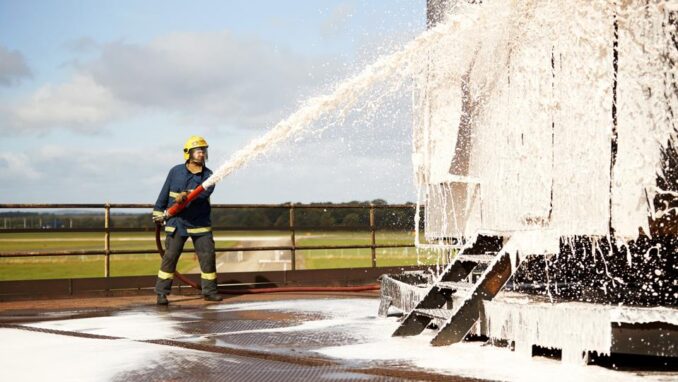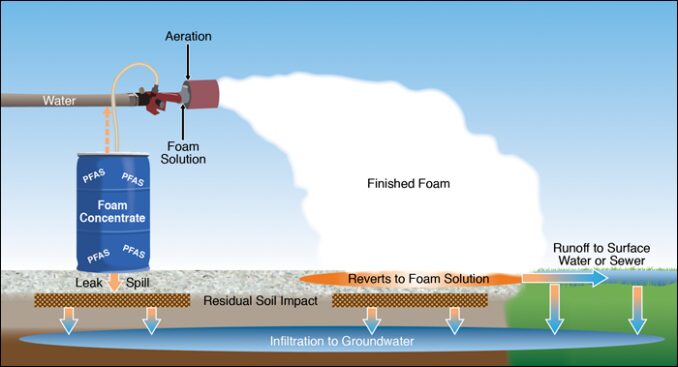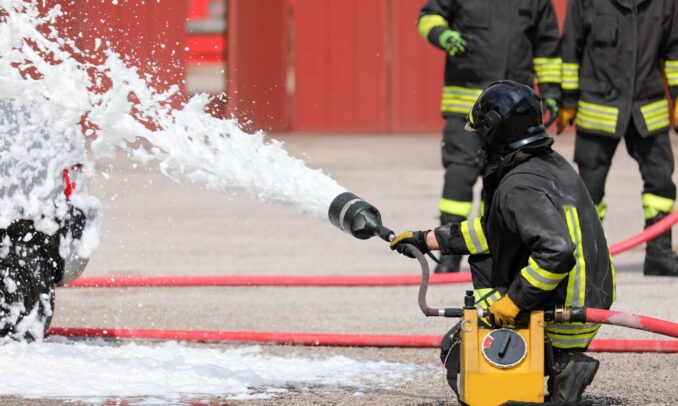Imagine a world where the very foam used to save lives and protect property is also a hidden threat to our health and environment. That’s the reality we face with aqueous film-forming foam(AFFF), that contains PFAS. These chemicals are potent carcinogens.
As the concern over PFAS contamination grows, so does the urgency to find effective, PFAS-free alternatives. It’s a daunting challenge, but one we must tackle head-on.
In this blog post, we’ll dive deep into the world of PFAS-free firefighting, exploring the alternatives to AFFF, their effectiveness, and the challenges and opportunities ahead.
Understanding AFFF and Its Risks

Source:forbes.com
A long list of health concerns has been associated with per- and polyfluorinated compounds (PFAS). From Cholestrol-related issues and pancreatic cancer to developmental issues in children—these toxins wreak havoc in plain sight.
According to TorHoerman Law, exposure to PFAS is also associated with a higher incidence of hypothyroidism in women and prostate cancer in males.
For military and firemen, the hazards are personal and more prominent. These brave souls are surrounded by AFFF foams, which puts them at the forefront of PFAS exposure. Higher PFAS levels have been detected in the blood serum of firefighters across the US. This puts them at greater risk for health problems down the line.
It is a cruel irony that the individuals most susceptible to the covert risks of PFAS are also the ones who risk their lives to defend us.
Their leaching into groundwater from AFFF-contaminated areas can pollute our food and drinking water. Moreover, they do not degrade in the environment. Hence, they can stay in our ecosystem for centuries, leaving a poisonous legacy for the next generations.
The dangers, nevertheless, don’t end there. Communities close to AFFF-contaminated sites suffer greatly from PFAS pollution. These residents might be consuming hazardous food and water. And then there is the cost to ecosystems and wildlife when PFAS chemicals biomagnify and upset the fragile equilibrium of the natural world.
Many veterans and their families have sued AFFF manufacturers like DuPont and 3M. They argue that these companies were not upfront about the life-threatening risks of PFAS in their foams.
If you or anyone you know has suffered from AFFF exposure, you can file an AFFF lawsuit. Seek out an experienced personal injury attorney to navigate the complex legal landscape.
PFAS-Free Firefighting Foam Alternatives

Source: pfas-1.itrcweb.org
A critical focus within firefighting technology is the identification and implementation of effective and environmentally friendly alternatives to Aqueous Film-Forming Foam (AFFF). Several promising contenders are emerging, each with unique properties and applications.
High-Expansion Foams (HEF)
HEF foams leverage a unique aeration process to create a lightweight and voluminous foam, expanding up to 1000 times its original volume. Functioning similarly to whipped cream, HEF foam extinguishes fires by displacing oxygen within the enclosed space.
Due to its high volume, HEF foams can be deployed in smaller quantities compared to traditional foams, minimizing environmental impact and cleanup requirements.
Compressed Air Foam Systems (CAFS)
CAFS systems function by mixing water, foam concentrate, and air with compressed air to generate a dense and adherent foam. Applicable to various fire types, from structural fires to wildfires, CAFS systems utilize less water than traditional foams.
This results in faster fire knockdown and reduced water damage. The thick and clinging nature of the foam allows for extended coverage on vertical surfaces, mitigating the risk of re-ignition.
Synthetic Fluorine-Free Foams (SF3)
These novel foams utilize a combination of hydrocarbon surfactants, solvents, and stabilizers to generate a fast-acting and smothering foam blanket.
Numerous fluorine-free foams have shown to be as effective in firefighting applications as AFFF in terms of fire knockdown and dousing times. Because SF3 foams are PFAS-free, unlike AFFF, there is no chance of long-term contamination and related health concerns. Their biodegradability is one of these foams’ main benefits.
Water Mist Systems
These systems employ a refined water spray to cool and extinguish fires. By generating microscopic water droplets, water mist systems absorb heat and create a penetrating mist effective in confined spaces.
These mists function akin to a firefighting ninja, with reduced water consumption compared to traditional sprinkler systems. Water mist systems offer a precise and stealthy approach with minimal environmental impact.
The aforementioned alternatives represent promising solutions in the ongoing pursuit of PFAS-free firefighting foams. Each technology offers distinct advantages, and ongoing research and development efforts hold the potential for further advancements.
The transition process necessitates firefighter training on new equipment and techniques, along with departmental investments in novel technologies.
Implementing PFAS-Free Foams: Challenges and Considerations

Source: publichealthwatch.org
Transitioning to PFAS-free foams involves several challenges and considerations for fire departments and industrial facilities. One critical aspect is ensuring compatibility with existing firefighting equipment and systems.
Alternative foams may have different physical properties and require adjustments to proportioning systems, nozzles, and application techniques to optimize performance.
Training and education are essential for firefighters transitioning to new foams. Comprehensive training programs should cover the proper handling, storage, and application of PFAS-free alternatives. They also need to cover any necessary modifications to firefighting tactics and strategies.
Cost implications and budgetary concerns are significant factors for fire departments considering the transition to PFAS-free foams. The initial costs associated with purchasing new foams, upgrading equipment, and training personnel can be substantial.
Fire departments may need to seek additional funding or budget allocations to support the transition.
Balancing effectiveness and environmental sustainability is a crucial consideration when implementing PFAS-free foams. While these alternatives offer reduced environmental and health risks, they must also meet stringent performance standards to ensure adequate fire protection.
To conclude, the firefighting community stands at a crossroads. The crucial shift towards PFAS-free alternatives presents a multitude of challenges. However, the potential benefits for human health and environmental well-being are undeniable.
Moving forward, collaboration between firefighters, researchers, and policymakers is paramount. By working together, we can usher in a new era of firefighting defined by safety and sustainability.





